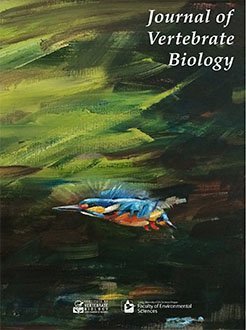Martin Musil, Marek Let, Martin Riebel, Paride Balzani, Antonín Kouba
Journal of Vertebrate Biology 73 (24060), 24060.1-12, (2 September 2024) https://doi.org/10.25225/jvb.24060

KEYWORDS: behavioural ecology, biological invasion, non-native crayfish, non-native fish, predation
Numerous fish and crayfish species are invasive in freshwater ecosystems, where they interact. In this study, we performed two experiments to investigate adult three-spined stickleback Gasterosteus aculeatus predation on early juvenile invasive crayfish in Europe. The first experiment focused on evaluating predation upon early juveniles of three invasive species (the marbled crayfish Procambarus virginalis, the spiny-cheek crayfish Faxonius limosus, and the signal crayfish Pacifastacus leniusculus) with varying exposure times (one, three and six hours), revealing crayfish species-specific vulnerabilities and the role of exposure duration. Marbled and spiny-cheek crayfish juveniles were more susceptible to three-spined stickleback predation than signal crayfish. Nevertheless, larger signal crayfish suffered more damage caused by the fish predator. The second experiment assessed the role of size in predation efficiency, using three different size groups of marbled crayfish juveniles as prey of adult three-spined sticklebacks during three hours of exposure. In this second experiment, we found the predation level to be size-dependent, with the smallest group of juveniles (20-80 mg) being preyed upon the most, and the largest group (250-350 mg) the least. The efficient also predation of the three-spined stickleback on large juvenile crayfish underscores its potential ecological impacts also on native crayfish.

